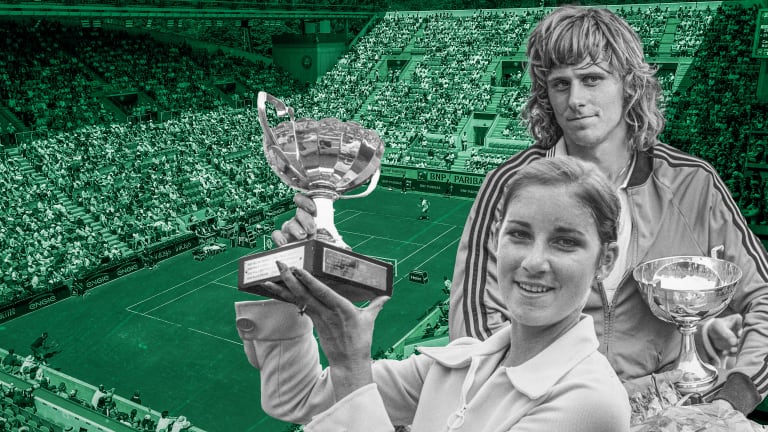from Steve Tignor
The YouTube videos are grainy, and the sound goes in and out. The film switches from black-and-white to color, and you may hear a different commentator from one set to the next. You’re never sure which parts of a match might have been skipped over. The tennis and the officiating can seem startlingly casual, compared to the ritual-filled, expensively-produced version of the game we see today. The two title winners look impossibly young.
For most fans, these jagged, dream-like clips offer the only glimpses we can get of the 1974 Roland Garros finals, and the two-player coup that was staged during those matches 50 years ago this spring. This teenage revolt may be the least-celebrated transformational event in any sport, but in a way that makes sense, because the budding superstars who pulled it off—Chris Evert and Bjorn Borg—did it with the shy ruthlessness for which they were already famous.
The former was known as the Ice Maiden. The latter was known as Ice Borg. By winning their first Grand Slam titles over the same weekend, they turned the ’74 edition of Roland Garros into tennis’ version of an ice storm. While their revolt may have been cool and quiet, it never melted away. Five decades later, tennis, in the way it’s played and marketed and watched, is still feeling the effects of that fortnight in Paris.
Evert was 19 at Roland Garros that year. Borg turned 18 during the tournament. Despite their youth, each was fulfilling a potential that had been obvious years earlier. Both had kicked off their careers by creating scenes of unprecedented fan hysteria at a Grand Slam event.











